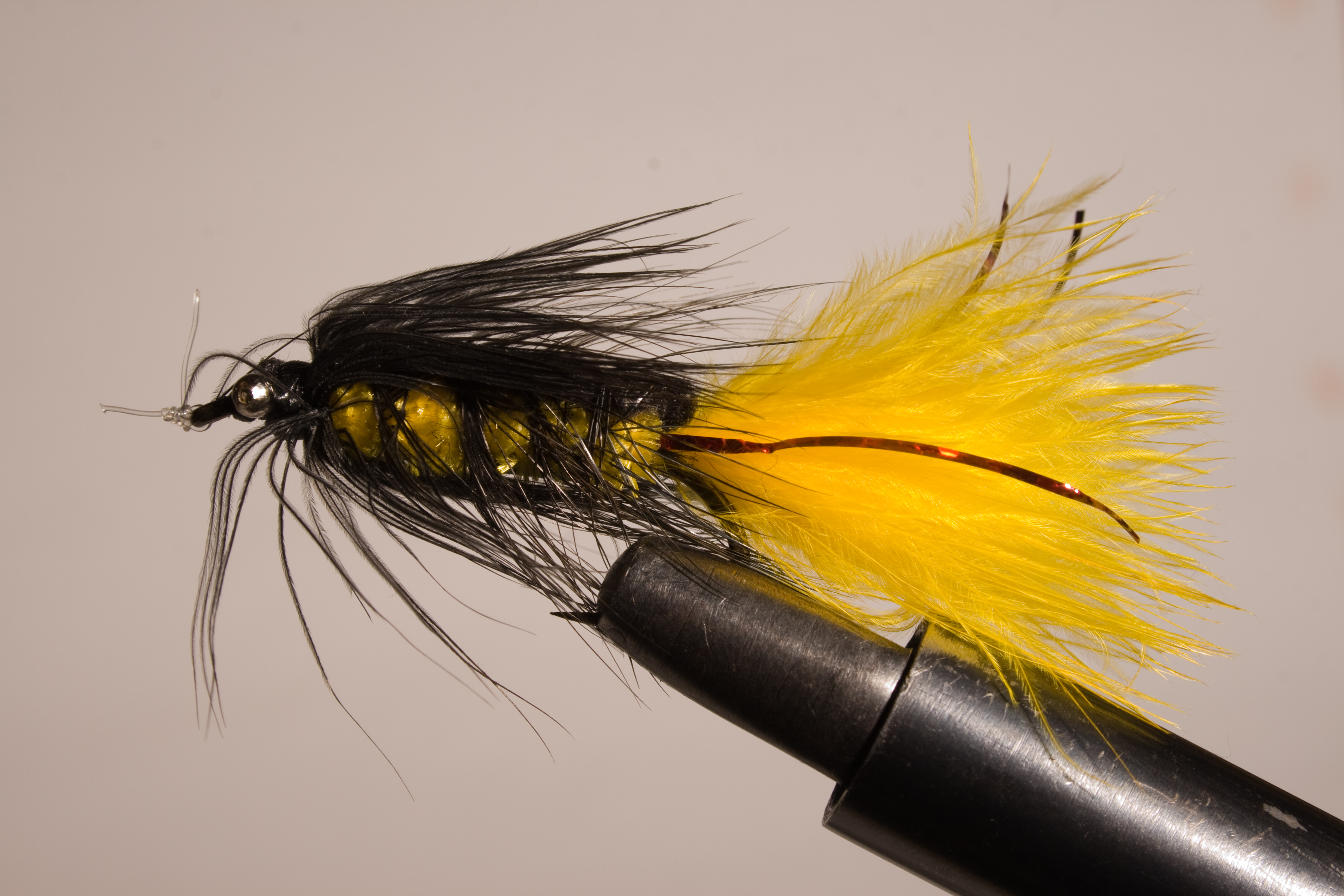Woolly Bugger on:
[Wikipedia]
[Google]
[Amazon]
The Woolly Bugger is an artificial fly commonly categorized as a wet fly or streamer and is fished under the water surface. It is a popular and widely used pattern for both freshwater and saltwater game fish and is generally listed as one of the top patterns to have in any fly box. John Gierach, a noted fly fishing writer discussed the Woolly Bugger first in his chapter on streamers in ''Good Flies''. Woolly Buggers are typically fished in streams, rivers, ponds, lakes, and tidal flats. Today, Woolly Buggers are tied in a wide variety of styles and colors to imitate a wide range of game fish prey.
 The Woolly Bugger, depending the specific material used and how it is fished can be assumed to resemble large nymphs, baitfish, leech, drowning terrestrial insects, clamworms, crayfish, shrimp or crabs.
The Woolly Bugger, depending the specific material used and how it is fished can be assumed to resemble large nymphs, baitfish, leech, drowning terrestrial insects, clamworms, crayfish, shrimp or crabs.
Origin
Although the original Woolly Bugger pattern was believed to have been created by Pennsylvania fly tyer Russell Blessing as early as 1967 to resemble a hellgrammite, ordobsonfly
Dobsonflies are a subfamily of insects, Corydalinae, part of the Megalopteran family Corydalidae. The larvae (commonly called hellgrammites) are aquatic, living in streams, and the adults are often found along streams as well. The nine genera ...
nymph, its precise origin is unknown, but is clearly an evolution of the Woolly Worm fly, which itself is a variation—intentional or not—of the British palmer fly, which dates back to Walton and beyond.
Imitates
 The Woolly Bugger, depending the specific material used and how it is fished can be assumed to resemble large nymphs, baitfish, leech, drowning terrestrial insects, clamworms, crayfish, shrimp or crabs.
The Woolly Bugger, depending the specific material used and how it is fished can be assumed to resemble large nymphs, baitfish, leech, drowning terrestrial insects, clamworms, crayfish, shrimp or crabs.
Materials
The Woolly Bugger fly is constructed with a marabou tail (with or without some sort of flashy material in the tail), a chenille or fur body, and ahackle
The hackle is a clipped plume or short spray of coloured feathers that is attached to a military headdress, with different colours being associated with particular regiments.
In the British Army and the armies of some Commonwealth countries, ...
palmered from the tail to the head of the fly. Tying the pattern with a rib of fine copper wire helps protect the palmer hackle. The underbody may be weighted with lead or tungsten wire. Popular colors are olive, brown, and black for freshwater use. Brighter colors and combinations of colors are especially popular for steelhead, salmon and saltwater use.
Variations and sizes
Woolly Bugger flies are typically tied on number 2 to 14 long or extra long hooks. Variations include Woolly Buggers weighted with brass or tungsten beads, brass or tungsten cones, brass, lead or tungsten dumbbell eyes.Notes
References
{{fisheries and fishing Streamer patterns